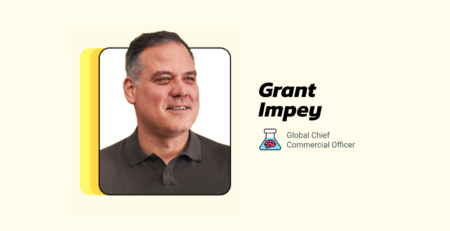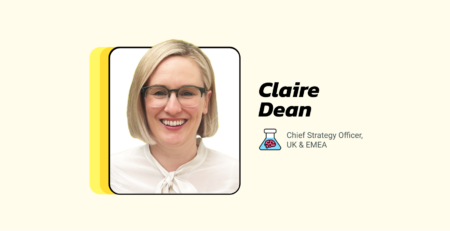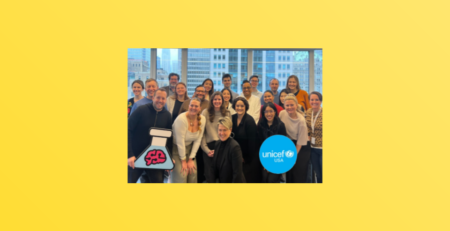You’ve built your social-first community. Now what?
In 2024, most brands have solid relationships with their audience (and if you don’t, what have you been doing?!).
Over the past few years, brands have been finding and developing these online communities. While building them is crucial to success, once you have captured this audience, what do you do next?
What will digital community look like in 2025 and how can brands stand out and give us more? It feels like something is shifting in the industry and Helen Clow from Brainlabs is here to talk about it.
What is community?
The word is everywhere in digital marketing, but what does community actually mean? A brand’s community is their followers and customers, but it’s also the influencers and ambassadors they partner with.
There’s such a focus on building authentic communities, but not as much on the content being pushed to them. Many brands have gotten into a rut of copying trends, producing similar content, and dare we say it.. lacking creativity.
Helen says, “Everyone can do authentic, native content now, but it means that when you’re scrolling, it’s so homogenous. You often can’t tell one brand’s sponsored ad from another – nobody stands out anymore.”
By desperately trying to find their niche communities, brands have ironically lost their individuality.
Niche is out: the shift prediction
Could niche partnerships be shifting to mass culture? We’ve predicted this at Brainlabs, and we’re not the only ones that think so. Burn After Reading’s article on the topic notes that niche communities and conversations have been mined over the past two to three years to bring new, ‘authentic’ content and partnerships. But with this has come an overwhelming amount of content, new brand entry competitors, and unlimited choice. What was once a small community is now over-commercialized and uncreative.
But to push yourself creatively doesn’t immediately mean you have to think of something brand new. Instead, what about looking closer to home? You shouldn’t forget the community you’ve given everything to grow. It’s time to bring brand and community together.
How to make the most of this shift
Helen says, “We’re seeing big brand moments come to life in many ways, including the move to true community moments that go above and beyond.” Here are six ways brands can include their communities to create exciting content that people actually want to see.
- Bring your community into the real world
In a chronically online era, many brands have switched things up and brought their community closer IRL.
Beauty brand REFY swapped influencers for customers and invited competition-winning fans to join them on a luxury retreat in Mallorca. This community-first approach is refreshing to see in the industry. The organic content created by REFY and the women who attended focused on the experience and showed a sense of genuine community and connection.
Influencer trips are nothing new, and brands may be put off after the controversy around Tarte’s influencer Dubai trip. Is it appropriate to spend hundreds of thousands on lavish holidays in an economic crisis? Opinions are divided, but it’s not necessarily different from spending this amount of money on an influencer campaign. Tarte pointed out that they didn’t pay for any social posts on the trip. Yet mega-influencer Alix Earle organically posted nine TikToks which amassed 33 million views. (Bear in mind, a single post of hers would usually cost over $100,000!)
At Brainlabs, we know that influencer events can work (as long as you find the right talent). We partnered with a global beauty brand who took macro ambassadors to Costa Rica and the trip was a huge success.
To do events the right way, companies should work with creators who are true advocates of their brand. Or take note from REFY and show their community they are valued.
- Let your audience do the talking
User-generated content (UGC) promotes brands’ products in a way they can’t do themselves – it shows people what the customer really thinks and builds true advocacy. With up-and-coming talent trying to break into the industry, there are many potential creators eager to showcase a product online. UGC shows which products people use, how they use them, and why they love the brand. And it does it all without costing the brand a penny.
Dior has taken UGC a step further to involve their community with their @diorbeautylovers Instagram. Creators who use the products can film content and tag Dior for a chance to be featured on their page. Dior gets free marketing, creators receive exposure and gain followers, and the interactive fan channel develops the brand’s community.
It’s a win win.
- Become relatable to your community
Creating communities is all about getting to know the brand and the shift to employee-generated content does just that. With content that doesn’t take itself seriously, you can really showcase your brand personality. We’re seeing a lot of Gen Z employees creating work-related content that resonates with younger audiences.
And this doesn’t just work for typical aesthetic brands. Enfields Estate Agent’s video of a Gen X boss pretending to be his Gen Z employee got nearly 2 million views on TikTok and got people talking in the comments. Fyfield Manor B&B’s TikTok appears to be run by the owner’s Gen Z daughter, and their ‘Gen Z wrote our marketing script’ video is the best we’ve seen.
- Take your community off socials
Digital marketing shouldn’t be limited to just social media. Once brands have a social community, they can build website traffic through other channels, such as blog content, newsletters, or email marketing. By utilizing the community they already have, brands can strengthen customer relationships and reach new followers.
- It’s not all about TikTok and Instagram
Brands could be missing out on communities they’re not even aware of. Aside from TikTok and Instagram, there’s obviously YouTube, which brands should be utilizing. But, don’t forget less obvious channels like Reddit or Discord, where communities can grow. Brands should look where the conversations are organically happening – they may already have people talking about them. And there are brands already winning at this. Look at Starbucks on Discord. They have built a loyalty program through this social media channel, keeping customers engaged in a whole new way. The Washington Post began its Reddit account in 2017 (the first publishing company to make one), and since then, they have built an active and engaged community of followers.
This is a hugely interesting space which can be grown by working with influencers known by your audience, or the audiences on these channels to authentically bring you into the mix.
- Partner for the long-term
Collaborating with creators is a key part of most marketing strategies, but how do brands take this to the next level? By partnering long-term with advocates who share their brand values and help grow their community.
While this isn’t a new point of view (we’ve all heard of brand ambassadors), brands simply aren’t committing, either in terms of time of partnership or how involved they make these partnerships in their wider marketing.
If a brand collaborates with an influencer on a successful campaign, why not look at innovative ways to show that as a real part of your brand. Back in 2023, TikTok personality GK Barry launched the ‘Barry-aki’ burger for KFC, and the campaign was a huge success. As the influencer’s popularity continues to grow, we wonder – did the fried chicken brand miss a trick by not getting her on board as an ambassador who could have continued these types of fun activations?
Don’t get left behind
Brands must be bold to avoid being bland.
You’ve built your community, but so has everyone else. How do you avoid fading into the sea of brands fighting to stay afloat?
Niche isn’t niche anymore, and brands must be creative to avoid producing homogeneous content. Native social content is fine, but if it’s all you’re still doing in 2025, you’re late to the game.
To make sure you’re part of the shift, doing more with your community is key. And if you’re not sure how to do that, talk to our expert Brainlabbers.




